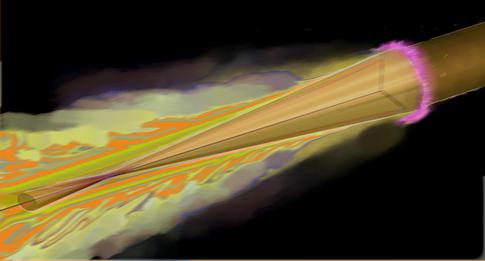XFEL: A notable step towards understanding inertial confinement fusion
A notable step towards understanding inertial confinement fusion

Artistic view of the imploding wire: a strong current of high-energy electrons (pink) heats up the surface, thus driving subsequent shockwaves which compress the wire radially. Source: HZDR / T. Toncian
At the High Energy Density Instrument (HED-HIBEF) a research team led by the Helmholtz-Zentrum Dresden-Rossendorf (HZDR) has succeeded in producing and observing an extreme state of matter with a relatively low-power but extremely fast laser pulse.
The new measurement method could be useful for astrophysics as well as for fusion research. “Our experiment impressively demonstrates how we can generate very high densities and temperatures in a wide variety of materials,” says Ulf Zastrau, who heads the HED group at European XFEL. “This will take fusion research an important step forward.”
The experiments are also of great importance for understanding the conditions inside stars or planets, where the pressure often reaches millions and millions of bars and temperatures can achieve several million degrees Celsius.
Publication:
Cylindrical compression of thin wires by irradiation with a Joule-class short-pulse laser
Nature Communications (DOI: 10.1038/s41467-024-52232-6).
